Holden Torana LU LJ LH LX GTR XU-1 1969-1979 Ellery repair manual NEW
Holden Torana LC LJ LH LX UC GTR XU1 SLR5000 1969 - 1979 Ellery Repair ManualOther Holden Torana Repair Manuals click hereNEW - 360 pagesThe small cars with heaps of go and dressed to kill. Includes XU1 & A9X models. We have covered all the information the enthusiast needs from grease and oil change to a full rebuild. This manual covers Holden Torana LC, LJ, LH, LX and UC models built from 1969 to 1979. It includes GTR, XU1, SLR5000, A9X models and all six-cylinder and V8 engines including SL/T turbocharged option plus manual and automatic transmissions. The manual provides illustrated step by step instructions for repair and maintenance procedures based on a complete vehicle teardown and rebuild. It does not cover four-cylinder engines. Engines covered: Other Holden Car Repair Manuals click here
|
The next generation of Toranas (LC) appeared in October 1969 and were available with either a four or six cylinder engine. The inline six had a capacity of 138 in (badged as the '2250'). The six-cylinder cars had a longer wheelbase (100 inches against the 95.8 inches (2,430 mm) of four-cylinder models), a more aggressively styled slightly longer nose to accommodate the larger engine, and offered a choice of three and four-speed manual gearbox or a three-speed Trimatic automatic transmission. The Torana was Wheels magazine's Car of the Year for 1969. Body styles were all new and available in either two or four doors, and were offered in S or SL trim. Bench or bucket front seats were also an option, along with disc front brakes. A more-powerful 161 in³ engine (badged as the '2600') was made available soon after the model's release in the more upmarket SL and in the two-door sports model, the GTR, as a 2600S with a two-barrel Stromberg WW carburettor. Later in production, the 161ci engine was replaced with a larger 173ci version (badged as the '2850') which also made it into the last of the LC GTR cars in two-barrel form. In 1970 the first genuine performance Torana, the GTR XU-1, was developed by Holden along with Harry Firth of the Holden Dealer Team for competition in popular Series Production racing series in Australia as well as in off-road rallying. However, the main purpose of the Torana GTR XU-1 was to keep Holden competitive against the big and powerful Ford Falcon GT-HO V8s in the Hardie-Ferodo 500 (Bathurst) endurance race that is considered to be the jewel in the crown of Australian motorsport.
The LC Torana GTR XU-1 was equipped with a 160 brake horsepower 186 in³ (3 litre) six cylinder engine, fitted with three Zenith Stromberg CD-150 carburettors, cast iron headers, a performance cylinder head and camshaft and an Opel four-speed manual gearbox. This car featured a rear spoiler, guard flutes, wider steel rims, full instrumentation and front disc brakes as standard. The Torana GTR XU-1 proved to be a strong performer both on the road and track due to its favourable power/weight ratio. It soon gained huge popularity in Australia, being an ideal race car in many forms of motor sport, especially Series Production touring car racing and rallying. It successfully replaced the V8 Monaro GTS 350 as Holden's frontline track race car in 1970, winning many touring car and rally events, but for the famed Bathurst 500-mile (800 km) race which Ford won in 1970 and 1971 with its XW Phase Two and XY Phase Three Falcon GT-HOs
About the Holden Torana LJ
In February 1972, the facelifted LJ Torana was introduced with the six-cylinder models now visually associated with the larger Holden HQ series. Many mechanical components were shared with the LC, with the major changes limited to the choice of engines. The four-cylinder Torana retained its 1200 & 1600 engines but was now also available with a 1300 cc unit. The 2250 and 2850 engines carried over into the revised six-cylinder Torana models, and the 3300 engine (known as the 202 in the HQ range) was adopted as the engine for the LJ Torana GTR sedan. Gearbox choices remained the same across the range. A race-bred version of the 3300 engine was also fitted to the LJ Torana GTR XU-1, producing well over 200 brake horsepower. By now equipping the XU-1 with the 202ci engine and larger 1.75in CD triple carburettors, as well as a new close ratio M21 4-speed Australian made transmission, this gave the nimble XU-1 the power boost it needed to seriously challenge the powerful Ford Falcon GTHO Phase III, which had won the 1971 Hardie-Ferodo 500 production car endurance race held annually at Bathurst. In the somewhat wet 1972 Hardie-Ferodo 500, the lightweight HDT Torana GTR XU-1 was able to finally claim victory against the heavyweight GT-HO, driven solo for 500 miles (800 km) by Peter Brock. This would be the start of the 'Peter Perfect'/Torana legend, and the first of five Bathurst wins for the Torana in its colourful ten year racing career at Bathurst. Holden also developed a 308ci V8-powered version of the GTR XU-1, often referred to as the GTR XU-2, but the car never made it past the prototype stage. This was due to the 'Supercar Scare' of 1972, which involved vast political pressure being placed upon Holden, Ford and Chrysler to abandon their proposed specially-built 'Bathurst Supercars', such as the XU-2. This was the result of a media frenzy that was reporting against these soon-to-be released "bullets on wheels" available to the general public. In effect, all three manufacturers bowed to this pressure, and Holden would postpone its introduction of a V8 Torana for two years until the release of the slightly larger LH series Torana in 1974. A total of 81,813 LJ Toranas were built by Holden in Australia, with some exported to New Zealand, but only in 6-cylinder form, likely due to the similar 4-cylinder Vauxhall Viva HC range being sold there as well. The 2850SL model, with bucket seats and 4-speed floor shift, or Trimatic three-speed automatic was also shipped to New Zealand in CKD kit form for local assembly from 1973, becoming the first Kiwi-built Torana. The LJ Torana formed the basis of the Chevrolet 1700 in South Korea, produced by GM Korea (now GM Daewoo) between 1972 and 1976. Unlike the Torana, the 1700 was also available as a five-door station wagon. Powered by a 1,698 cc four-cylinder engine, the 1700 sold poorly in the Korean market with only 8,105 units produced; the car was perceived to suffer from high fuel consumption.
About the Holden Torana LH
March 1974 saw the first completely new Torana body, with the arrival of the larger mid-sized LH series, produced in four door sedan style only. Despite the larger external size, the car was relatively cramped by mid-1970s standards. It resembled other GM products of its generation, notably the Opel Ascona. It was unique in that, following the addition of a 4 cylinder option in May 1974, the same body style was available with a choice of inline 4, inline 6, or V8 engines, specifically, 1.9 litre Opel four, 2.85 and 3.3 litre Holden 'red' sixes, and 4.2 and 5.0 litre Holden V8s. The 5.0 litre engine was reserved for the sporting LH Torana SL/R 5000 sedan. A special build derivative of the SL/R 5000 was the Bathurst-intended 'L34 Option', of which only 263 were built, incorporating a unique engine block and other improvements for durability in competition use. The most notable external feature of the L34 was the bolt-on wheel arch extensions, designed to accommodate larger racing rims and tyres. The L34 proved to be fast and successful, yet fragile, in Australian touring car racing. It was eventually superseded by the evolutionary A9X option made available in the LX Torana series in 1977. The LH Torana in L34 form won the famed Bathurst 1000 touring car race with Peter Brock and Brian Sampson in 1975 and with Bob Morris & John Fitzpatrick in 1976. Prototype wagon and hatchback versions of the LH Torana were built, but never reached production. Overall, a total of 70,184 LH Toranas were built.
About the Holden Torana LX
The mildly facelifted LX series arrived February 1976. Cosmetically, the most obvious changes were to replace the LH's rectangular headlights with round headlights, side window surrounds were changed from body colour to black, and the front Holden badge was enlarged. Soon after its introduction, the LX was subjected to performance reducing engine modifications in order to comply with new mid-year emission regulations (ADR 27A). A two-door hatchback body was introduced as an alternative to the four-door sedan, although the 1,897 cc Opel unit was not offered in the Torana hatchbacks. When the LX series was introduced in it featured a choice of four, six and eight cylinder engines. The original LX series Sunbird was a single-trim range, with four-speed manual and three-speed automatic transmissions. There were minor trim differences compared to the Torana, notably the grille (with vertical bars) and distinctive chrome wheel covers. It was marketed as a four-door sedan and as a three-door hatchback. The introduction of Sunbird also coincided with the first attempt by Holden to add a handling package to its range of cars. The introduction of 'radial-tuned suspension' (aka RTS) began with the LX Sunbird sedan and hatchback and then the LX Torana.During 1977, the LX series also saw the development of another limited build high-performance option aimed at winning the annual Bathurst touring car race. This was the 'A9X Option' that became available on the four door SLR 5000 and two-door SS hatchback in 5.0 litre V8 form. The A9X cars visually resembled the 'L34 Option' of the LH series, but with the addition of a rear-ward facing bonnet scoop that was specially designed to force air into the engine to produce maximum power in racing conditions. The A9X package varied from the old L34 in road form in that whilst the engine was not modified, the A9X nevertheless had some special mechanical features such as rear disc brakes, heavy duty axles and a heavy duty '10 bolt' differential. After being rushed into racing service, the untried Torana A9X ultimately lost its debut Bathurst race in 1977 to the Ford Falcons of Allan Moffat and Colin Bond. However, the A9X package was soon refined and proved dominant during the following two seasons of touring car racing in Australia, claiming both the 1978 and 1979 Australian Touring Car Championship titles and the Bathurst 1000 km races of both years. Overall a total of 65,977 LX Toranas were produced by Holden.
About the Holden Torana UC
The introduction of the UC Torana in March 1978 saw the demise of V8 power and the cessation of the sporting SL/R variant in the Torana range of cars. The UC series featured a significantly modernised frontal appearance and a completely new interior dash layout. Torana was now rationalised to a choice of two equipment levels and two six-cylinder engines, the 2.85 litre and the 3.3 litre. There was at one point design consideration of a five-door hatchback version of the UC Torana, which had a similar side profile to the Rover SD1 and rode an extended wheelbase. The idea never got past the clay modelling stage, probably in most part due to the impending introduction of the GM V-Car, the Commodore. After release of the VB Commodore in November 1978, it soon became clear to GM-H that the Torana was too similar in size when compared to the more modern Holden Commodore. As a result, the UC Torana was soon dropped from the Holden range in 1979. For a while at least, there was talk of further extending the Torana production life beyond 1980, with a facelifted 'UD' model, of which prototype models of the sedan and hatchback were actually built - featuring frontal styling similar to the Opel Ascona B. However, due to the car itself being outdated when compared to the new Japanese opposition (notably the Chrysler Sigma, Datsun Bluebird and Mazda 626), Holden decided on an easier route by simply introducing the 'Starfire' engine into the VC-series of Commodore sedans and wagons. Ultimately, the title of four-cylinder mid-size Holden was taken over in 1982 by the Camira, Holden's version of GM's front wheel drive 'J-Car'. However, for another two years, the 'Starfire' engine did remain available into the run of the VH-series Holden Commodore. Just over 55,000 UC series Toranas and Sunbirds were produced.
Holden Torana LC LJ LH LX UC GTR XU1 SLR5000 1969 - 1979 Ellery Repair Manual 1970 1971 1972 1973 1974 1975 1976 1977 1978

 0 Items (Empty)
0 Items (Empty)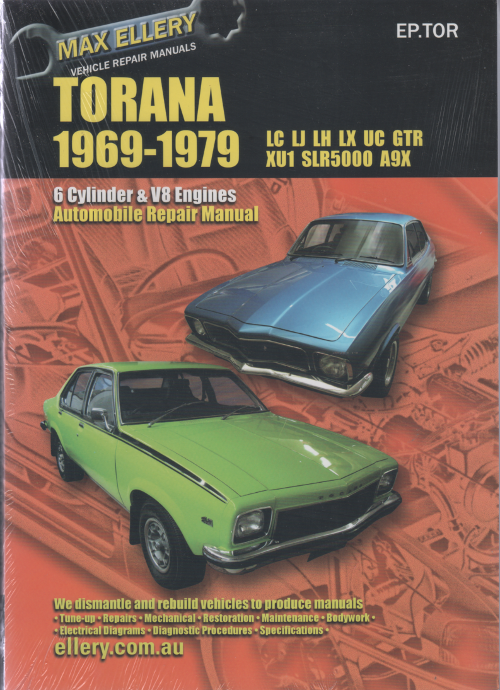


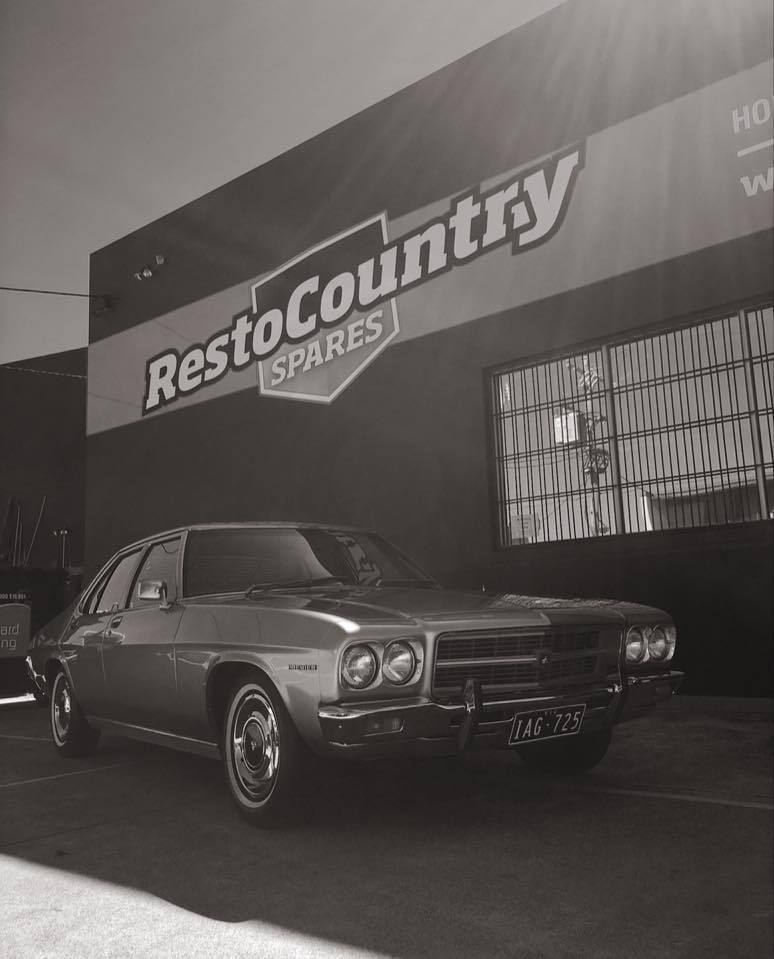
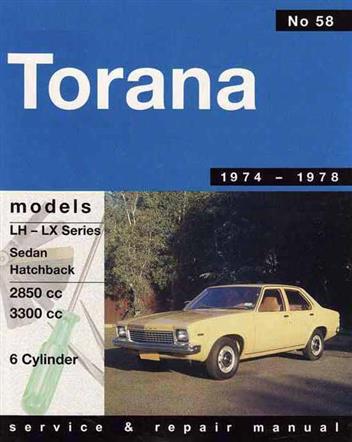
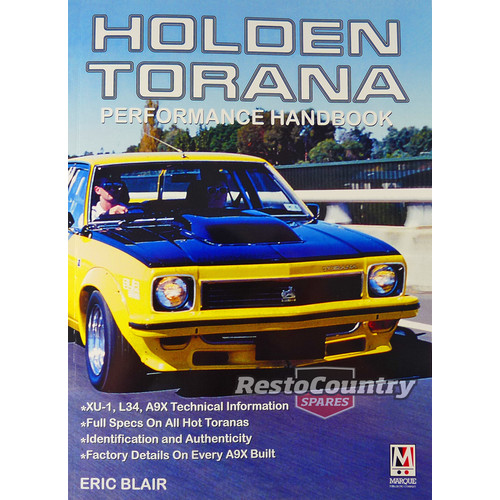
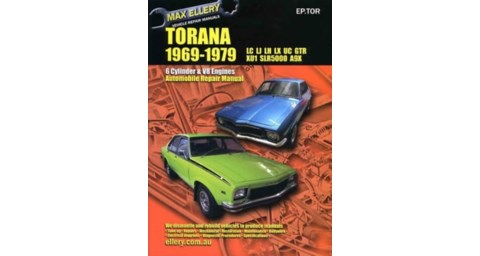
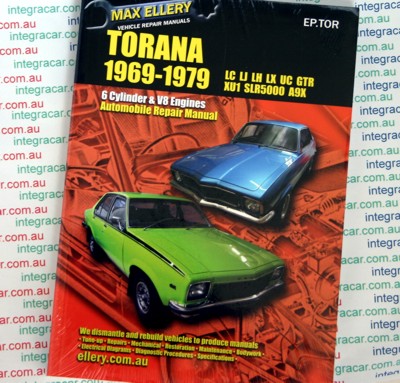 >
>